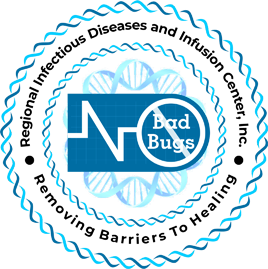
Understanding the Importance of Early Detection with Nonalcoholic Fatty Liver Disease Testing
Nonalcoholic Fatty Liver Disease (NAFLD) is more than just a medical term – it’s an ever-increasing global health crisis. Affecting millions worldwide, NAFLD infiltrates livers without being detected, often unwittingly increasing risks that are often underestimated. Like an insidious shadow in the dark, nonalcoholic fatty liver disease progresses quietly – often showing no symptoms until it has reached advanced stages. Therefore, early detection through nonalcoholic fatty liver disease testing is both valuable and potentially lifesaving. NAFLD can lead to more severe liver conditions and negatively affect quality of life and lifespan significantly, requiring us to act quickly if it continues. Early diagnosis becomes our best defense against its insidious spread. This article dives deep into the world of NAFLD, exploring its many ramifications. We will uncover why early testing may serve not just as a preventative measure but as hope for those at risk.
NAFLD, as the name suggests, is the accumulation of excess fat in the liver of individuals who consume little to no alcohol. Its progression is often silent, with many patients remaining asymptomatic until the disease has advanced. Unfortunately, without timely intervention, NAFLD can progress to a more severe form called Nonalcoholic Steatohepatitis (NASH), leading to liver fibrosis, cirrhosis, or even liver cancer.
Early identification of Nonalcoholic Fatty Liver Disease (NAFLD), and especially its more severe form Nonalcoholic Steatohepatitis (NASH), can have a tremendously beneficial impact on individuals, helping reduce its harmful consequences and mitigate its detrimental impact. Early diagnosis allows the possibility for damage repair and prevention of more serious diseases like cancer and cardiovascular disease. Furthermore, timely diagnoses provide individuals with a critical opportunity to make necessary dietary and lifestyle modifications. Changes that could slow or even reverse the progression of NAFLD/NASH should be prioritized when diagnosing and managing it. A multidisciplinary strategy must be employed when diagnosing or managing these conditions. Collaborative efforts among primary care physicians, nurses, and liver specialists are essential in crafting a customized treatment plan tailored precisely to each patient’s unique needs. Notable demographics at high risk for NAFLD include children. As such, regular health assessments such as physical checkups, blood tests, and imaging studies must become part of their healthcare regimen to detect NAFLD early and provide valuable insight into its development – this in turn aids treatment strategies and interventions for NAFLD.
As the emergence of NAFLD is an increasing concern, particularly among individuals with certain risk factors, the diagnostic approach has evolved to be more comprehensive. To accurately diagnose NAFLD and assess its severity, a range of tests is employed:
- Blood Tests: These measure liver inflammation through liver function tests, giving insights into how the liver is performing and if there are signs of damage.
- Imaging Tests: Beyond ultrasound, CT scans and MRIs provide a more detailed visual perspective of the liver, highlighting any abnormalities or significant fat accumulations.
- Advanced Tests: Transient elastography stands out as a method to both quantify liver fat and assess liver stiffness. However, its reliability can decrease in the presence of substantial liver fat. For those suspected of having advanced liver disease, a liver biopsy might be recommended. This invasive procedure provides a clear picture of liver health, fat accumulation, and inflammation levels, allowing physicians to make informed decisions on treatment and management.
NAFLD is a condition with the potential for grave consequences if it goes undiagnosed and untreated. The value of early detection and intervention is immeasurable. This is where businesses like RID-IC step in, playing a pivotal role in the healthcare landscape. Specializing in testing, RID-IC offers individuals, especially those in at-risk groups, a reliable and efficient means to get diagnosed early, ensuring they receive the necessary care before NAFLD advances to more perilous stages. Regular check-ups with healthcare professionals, combined with the state-of-the-art testing services provided by RID-IC, can make all the difference. Upholding a healthy lifestyle and staying informed about conditions like NAFLD is foundational, but partnering with dedicated establishments like RID-IC further fortifies the wall of protection around one’s health.
